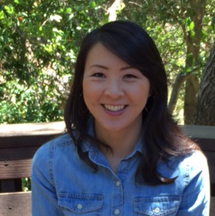 Education and COVID-19: Pressing the “Pause Button”
Education and COVID-19: Pressing the “Pause Button”
As I write this blog entry, we are about a couple months into shelter in place due to the pandemic caused by COVID-19. Even as we are ending the school year and planning what our family’s summer will look like, there are still many uncertainties and undecided factors surrounding what the re-opening of schools will look like in the fall. I wish there could be a “pause button” so we could evaluate some of the issues and consider the best way to move forward. On top of the obvious health risks with opening up schools and increasing exposure, here are some of the issues that I have been thinking about, and maybe you have, too.
Racial Tension
For the first time in a long while, people of Chinese descent have been targets of xenophobia as related to COVID-19. Even though I have not experienced any of the racially-based anger directed personally at me, I am saddened that it still happens. On a more global level, it troubles me immensely that racial inequalities still exist in marginalized communities! What implications do racial issues have for school-aged children when they return to school when it opens? Will they have picked up misinformation from the press? Or will they hang on to the message of kindness and hope, of doing what is right in the face of injustice like so many of my fellow teachers have taught?
Social Emotional Needs
One of the big concerns that schools have been addressing are the social emotional needs of children. Especially after such a traumatic event like this pandemic where everyone’s lives have been disrupted, students will need a safe place to process all of their pent-up emotions. Will schools be equipped to provide enough counseling services? Will teachers be trained to support students’ emotional needs? How can social emotional needs be addressed along with academic needs?
Digital Divide
Even before the corona virus reared its ugly head, the digital divide was a problem lurking in the background. While students had access to technology when they were in school, they might not have had the same access once they returned home. Sure enough, the shift to distance learning proved just how great the need is for access to technology. Even as schools were providing Chromebooks to use, students’ homes still needed WiFi to operate. And it’s not just the equipment, it’s people, too. Not all teachers were well prepared to move their teaching to an online platform. Will there be ongoing tech support for families who receive school-issued computers? Will there be ongoing professional development for teachers to learn how to teach online effectively?
Opportunity Gap
You may have heard of the term “achievement gap” to refer to the disparity in academic outcomes, but there is also this notion of the “opportunity gap,” the idea that students are not provided the same level of opportunity to achieve to the best of their potential. Whatever racial, socioeconomic, or systemic inequalities which existed pre-COVID-19 have now been exacerbated for all students. When considering the continuing deep budget cuts to education, more and more programs may be streamlined or eliminated. This means that fewer students will have access to programs and educational support personnel like teachers, librarians, or academic counselors who help students navigate the system that will bring them success. Will the state or federal system invest in America’s future? Will parents rise up and make their concerns known and voices heard on behalf of their children?
If these thoughts echo your own sentiments, I encourage you to reach out to your child’s school administrators and communicate your concerns with them.
Wishing you well,
Jaime
Copyright © 2020 by GenParenting

Discovering the joy of teaching while in high school, Jaime pursued her B.A. in English at Santa Clara University. She also received a teaching credential and a M.A. in Education Administration from Santa Clara University. Jaime taught English Language Arts at Rancho Middle School, motivating and inspiring young people to become effective communicators and contributors in their community. From being a Middle School English Language Arts/English Language Development teacher to becoming a stay-at home mom, Jaime is an education consultant who presents literacy workshops. Her workshops focus on a combination of her ten years of teaching expertise with tried-and-true experiences that she uses with her own children. Jaime is also a Teacher Consultant with the San Jose Area Writing Project. Jaime’s mission is to share effective reading and writing strategies with families to encourage literacy.

